N-(3-AMINOPROPYL)CYCLOHEXYLAMINE
- CAS NO.:3312-60-5
- Empirical Formula: C9H20N2
- Molecular Weight: 156.27
- MDL number: MFCD00003838
- EINECS: 222-001-7
- SAFETY DATA SHEET (SDS)
- Update Date: 2024-12-18 13:37:16
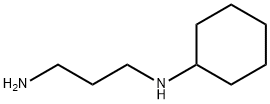
What is N-(3-AMINOPROPYL)CYCLOHEXYLAMINE?
Chemical properties
colorless tolight yellow liquid
The Uses of N-(3-AMINOPROPYL)CYCLOHEXYLAMINE
N-(3-Aminopropyl)cyclohexylamine is a competitive inhibitor of spermine and spermidine synthases.
What are the applications of Application
N-(3-Aminopropyl)cyclohexylamine is a competitive inhibitor of spermine and spermidine synthases
Properties of N-(3-AMINOPROPYL)CYCLOHEXYLAMINE
| Melting point: | −17-−15 °C(lit.) |
| Boiling point: | 120-123 °C20 mm Hg(lit.) |
| Density | 0.917 g/mL at 25 °C(lit.) |
| vapor pressure | 4.7Pa at 20℃ |
| refractive index | n |
| Flash point: | 214 °F |
| storage temp. | Keep in dark place,Inert atmosphere,Room temperature |
| form | clear liquid |
| pka | 11.00±0.20(Predicted) |
| color | Colorless to Light yellow to Light orange |
| Water Solubility | 5000g/L at 20℃ |
| Sensitive | Air Sensitive |
| BRN | 741954 |
| CAS DataBase Reference | 3312-60-5(CAS DataBase Reference) |
| EPA Substance Registry System | 1,3-Propanediamine, N-cyclohexyl- (3312-60-5) |
Safety information for N-(3-AMINOPROPYL)CYCLOHEXYLAMINE
| Signal word | Danger |
| Pictogram(s) |
 Corrosion Corrosives GHS05  Exclamation Mark Irritant GHS07 |
| GHS Hazard Statements |
H302:Acute toxicity,oral H314:Skin corrosion/irritation H317:Sensitisation, Skin H318:Serious eye damage/eye irritation |
| Precautionary Statement Codes |
P260:Do not breathe dust/fume/gas/mist/vapours/spray. P264:Wash hands thoroughly after handling. P264:Wash skin thouroughly after handling. P280:Wear protective gloves/protective clothing/eye protection/face protection. P310:Immediately call a POISON CENTER or doctor/physician. P301+P330+P331:IF SWALLOWED: Rinse mouth. Do NOT induce vomiting. P303+P361+P353:IF ON SKIN (or hair): Remove/Take off Immediately all contaminated clothing. Rinse SKIN with water/shower. P305+P351+P338:IF IN EYES: Rinse cautiously with water for several minutes. Remove contact lenses, if present and easy to do. Continuerinsing. P405:Store locked up. P501:Dispose of contents/container to..… |
Computed Descriptors for N-(3-AMINOPROPYL)CYCLOHEXYLAMINE
New Products
Tert-butyl bis(2-chloroethyl)carbamate (S)-3-Aminobutanenitrile hydrochloride N-Boc-D-alaninol N-BOC-D/L-ALANINOL N-octanoyl benzotriazole 3,4-Dibenzyloxybenzaldehyde 4-Hydrazinobenzoic acid 1,1’-CARBONYLDIIMIDAZOLE R-2-BENZYLOXY PROPIONIC ACID 4-HYDROXY BENZYL ALCOHOL 1,1’-CARBONYLDI (1,2-4 TRIAZOLE) 3-NITRO-2-METHYL ANILINE (2-Hydroxyphenyl)acetonitrile 4-Bromopyrazole 5-BROMO-2CYANO PYRIDINE 5,6-Dimethoxyindanone 5-broMo-2-chloro-N-cyclopentylpyriMidin-4-aMine 2-(Cyanocyclohexyl)acetic acid 4-methoxy-3,5-dinitropyridine 2-aminopropyl benzoate hydrochloride 1-(4-(aminomethyl)benzyl)urea hydrochloride tert-butyl 4- (ureidomethyl)benzylcarbamate diethyl 2-(2-((tertbutoxycarbonyl)amino) ethyl)malonate Ethyl-2-chloro((4-methoxyphenyl)hydrazono)acetateRelated products of tetrahydrofuran
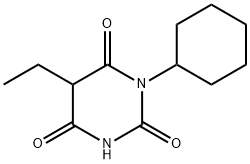

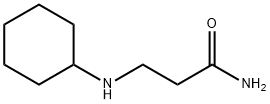
![4-ethyl-N-[3-(morpholin-4-yl)propyl]cyclohexan-1-amine](https://img.chemicalbook.in/CAS/20200119/GIF/CB31761862.gif)

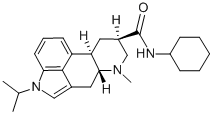
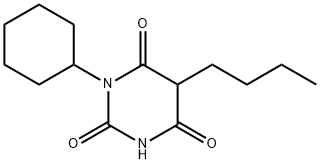
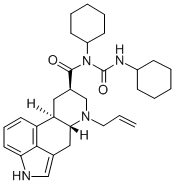
You may like
-
![3312-60-5 3- Cyclohexyl Amino Propyl Amine [CAPA] 98%](https://img.chemicalbook.in//ProductImageIndia/2024-03/Raw/e09eea02-d580-4c91-ba40-f43e28484db0.png) 3312-60-5 3- Cyclohexyl Amino Propyl Amine [CAPA] 98%View Details
3312-60-5 3- Cyclohexyl Amino Propyl Amine [CAPA] 98%View Details
3312-60-5 -
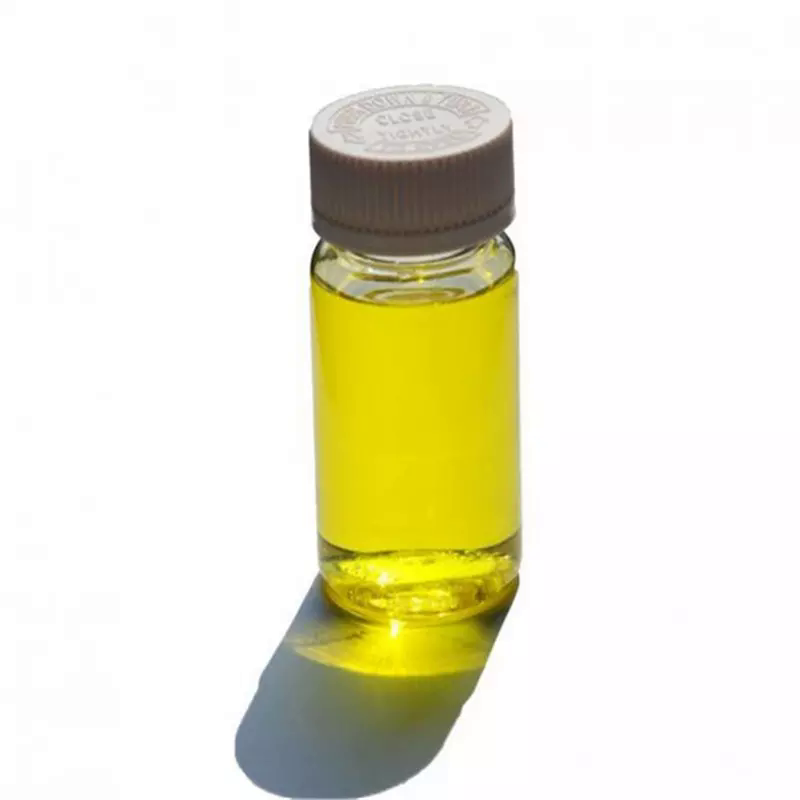 N-Cyclohexyl-1,3-propanediamine 99%View Details
N-Cyclohexyl-1,3-propanediamine 99%View Details -
 N-(3-Aminopropyl)cyclohexylamine 95% CAS 3312-60-5View Details
N-(3-Aminopropyl)cyclohexylamine 95% CAS 3312-60-5View Details
3312-60-5 -
 N-(3-Aminopropyl)cyclohexylamine CAS 3312-60-5View Details
N-(3-Aminopropyl)cyclohexylamine CAS 3312-60-5View Details
3312-60-5 -
 N-Vinylformamide 99%View Details
N-Vinylformamide 99%View Details
13162-05-5 -
 Chloro Uracil 1820-81-1 99%View Details
Chloro Uracil 1820-81-1 99%View Details
1820-81-1 -
 2-ethyl-6-methyl-3-hydroxypyridine succinate 99%View Details
2-ethyl-6-methyl-3-hydroxypyridine succinate 99%View Details
127464-43-1 -
 2-ETHYLPYRIDINE 100-71-0 99%View Details
2-ETHYLPYRIDINE 100-71-0 99%View Details
100-71-0
Statement: All products displayed on this website are only used for non medical purposes such as industrial applications or scientific research, and cannot be used for clinical diagnosis or treatment of humans or animals. They are not medicinal or edible.